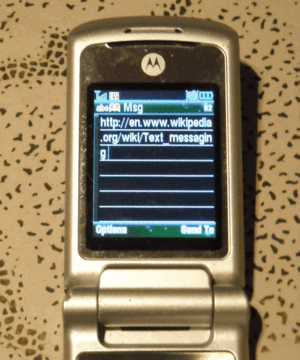The Federal Trade Commission is going after text message spammers, including companies that send links directing people to prizes that don’t actually exist, the agency announced last week in Chicago.
People are often tricked into signing up for free trials that eventually expire or rack up extra charges on their phone bills, costing millions of dollars.
The FTC is suing seven people sending the messages, and a company that owns a website linked to in spam messages.
“Our goal in these cases is to get money back for the victim,” said Steve Baker, director of the FTC’s Midwest Region. To reclaim money for victimized consumers, the FTC will go through with a claims process. Judges of these cases have also been asked to freeze the defendant’s assets. Further action is not up to the FTC; any criminal charges would have to be made by the Department of Justice.
The eight civil cases filed by the FTC claim the defendants sent unsolicited text messages to consumers containing deceptive claims. Seven of the cases deal with parties directly responsible for sending out the spam messages, while one case is against a company hired to send out text messages.
These companies have sent more than 180 million spam messages within the last year. This activity is illegal, but not yet punishable by criminal law, and before these recent filings, only five of these cases had ever been filed in federal court.
The FTC received 50,000 complaints about spam texts, in 2012, and 20,000 of those messages offered free prizes. Of the 72 percent of adults who own a mobile device, 13 percent have clicked on the false links, according to the FTC.
“We saw a massive jump in text message spam between 2011 and 2012,” Baker said.
The number of spam text messages jumped 7 percent last year, and Baker thinks the number will continue to rise. Collectively, spam can cost consumers millions of dollars, aside from just being a nuisance.
Consumers may experience higher charges on their cell phone bills, and those who respond can also become victims to other scams, varying on how much personal information they divulge.
Steve Wernikoff, an FTC staff member who headed the effort, explained how the spamming process works. “[We are] almost certain it is automated,” he said. “We know that mostly by the volume of the spam that is actually being sent out. In some cases we are seeing individual telephone numbers sending 100,000 texts a day.”
The spammers do not target specific demographics. They simply send messages to random numbers.
The spammers are also getting smarter. The FTC does not know enough about the software that enables the mass text messaging in order to regulate. Baker did say the use of SIM cards is becoming more frequent. This method allows the spammer to collect information on a disc that can easily be discarded and replaced.
“The trouble is finding these guys,” Baker said. “You can sue people but you have to know who to sue. It’s getting behind email addresses and IPs and registered domain names that have allowed us to track these guys down.”
Wernikoff mentioned that the problem with these scams is that the numbers change regularly, and that makes it harder to block them.
If cell phone users cannot block the spam texts, what can they do to protect themselves? The FTC directs the public not to respond to an unsolicited text, even if instructed to reply STOP or cancel to unsubscribe. When a user replies, the cell phone user is confirming that their cell phone number is valid. If the consumer receives one of these messages,he or she should forward the messages to the number 7726, which is a depository at the telephone company.
“They use that information to identify problem areas on their network to shut them down,” Baker said. “It’s operated by essentially all the major telephone networks in the US.”
Consumers are also encouraged to report the text message to the FTC and Federal Communications Commission, and Baker also said to delete spam messages immediately.
Meredith Kavanagh contributed to this story.








Be First to Comment